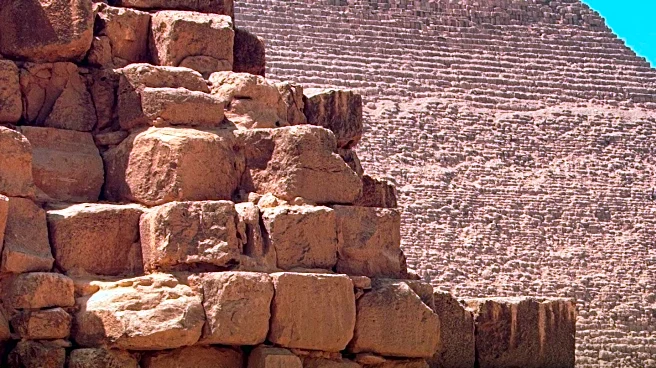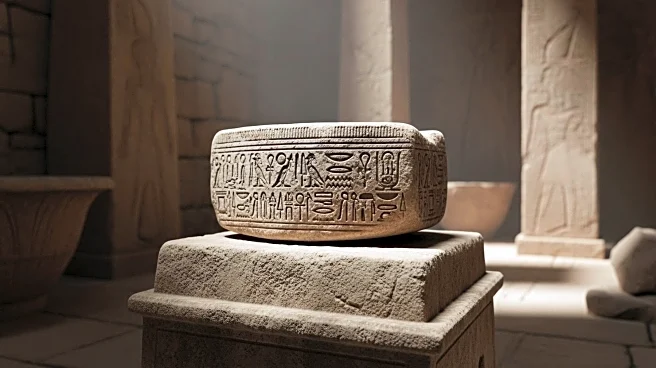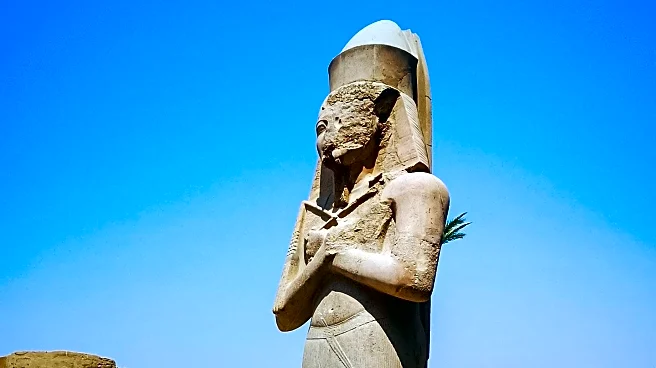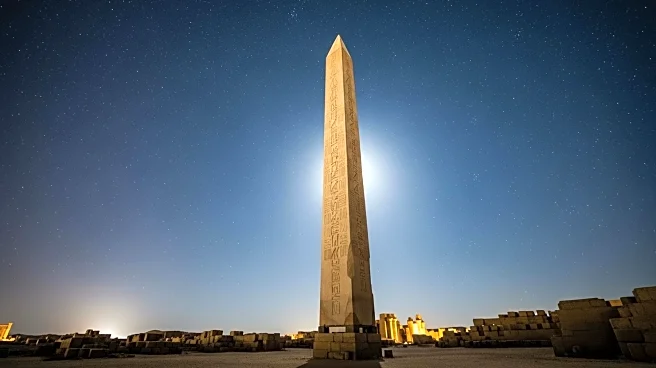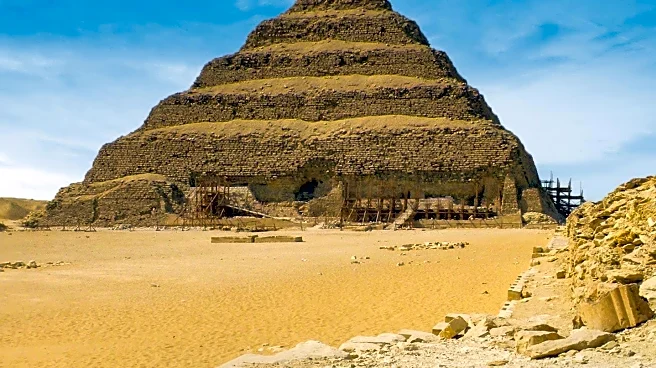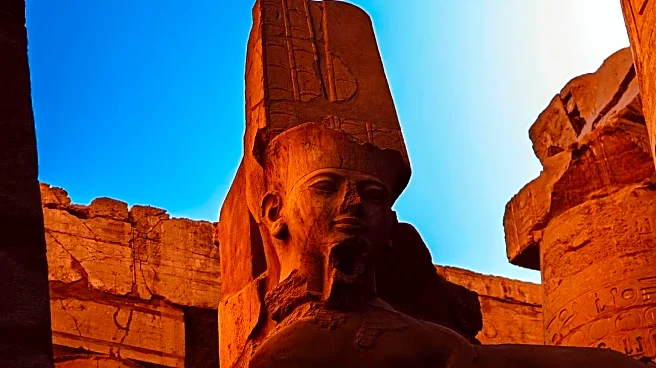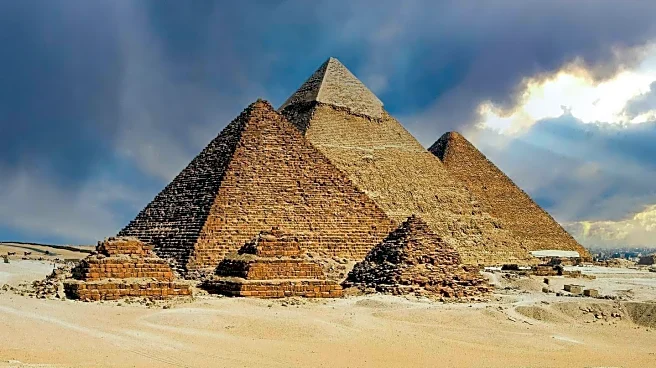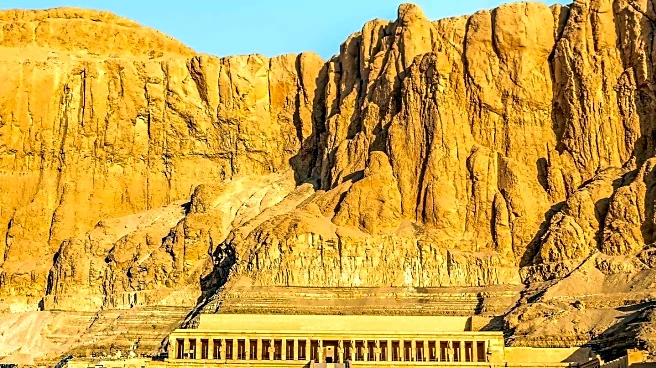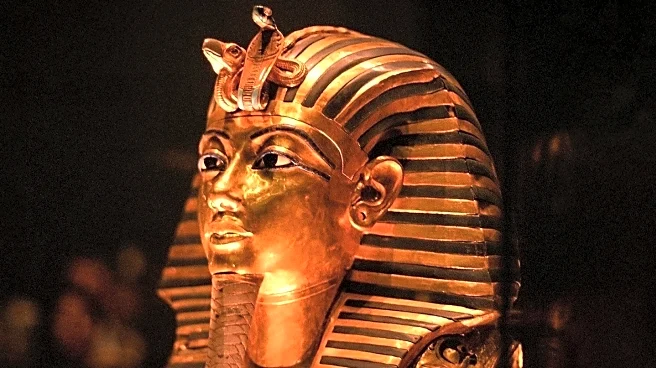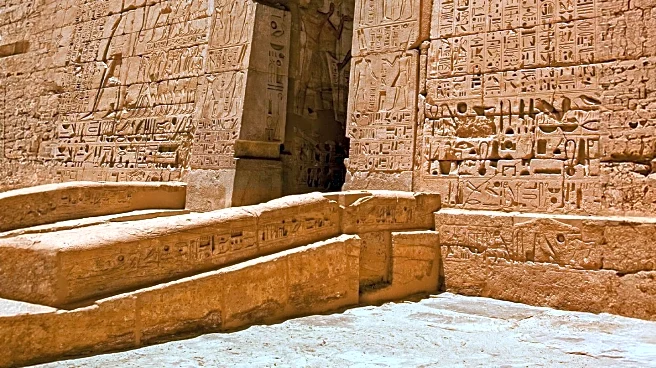What's Happening?
Recent research has revealed new details about the origins of Egypt's Karnak Temple, linking its development to changes in the Nile River and Egyptian mythology. The study, published in Antiquity, shows how the temple evolved from a small island to a major religious site. The landscape changes influenced the temple's construction, with sediment analysis providing evidence of early occupation. The findings suggest a connection between the temple's location and creation myths, where high ground emerged from water.
Why It's Important?
This research provides a deeper understanding of how ancient Egyptians interacted with their environment and integrated mythology into their architectural decisions. It highlights the role of natural landscapes in shaping cultural and religious sites, offering new perspectives on historical development. The study may impact future archaeological methods and interpretations of ancient sites, enhancing the understanding of Egypt's cultural heritage.

